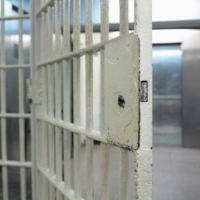30,000 Fewer in California Prisons, but Crime Did Not Spike
 (photo: Hans Neleman, Getty Images)
(photo: Hans Neleman, Getty Images)
After years of California pondering how to reduce its prison overcrowding to a humane level without spending much money, the federal courts strongly encouraged them to reduce penalties for crimes and ease up on nonviolent criminals.
They started to do that in 2011, as critics warned that crime would spike. Many of them preferred to build more prisons, but few wanted to spend the money. Prisons quickly shed 30,000 inmates, reaching the goal of 137.5% of designed-capability, and observers began to chart the effects.
Public Policy Institute of California (PPIC) took a snapshot of the “Impacts so Far” and captioned it with, “Realignment has largely been successful.”
Violent crime did not increase and there was no “dramatic change” in recidivism rates. The county jail population did not rise by as much as anticipated, so the total number of people incarcerated in California declined. Auto thefts, however, did rise.
It was anticipated that getting rid of nearly 20% of the state’s prisoners would yield significant savings for the California Department of Corrections and Rehabilitation (CDCR). But “savings have not materialized.” The 2015-16 state budget gives the department $10.07 billion, compared to $9.65 billion in 2010-11, the first year of realignment.
Where is the state blowing the money? A bunch goes to inmate medical and mental health care. State prison officials have gotten a lot of flack from the federal courts for how they’ve handled it to date.
A couple billion dollars went to build more jails, but Proposition 47 may reduce that cost. The initiative knocked down some low-level drug and property crimes from felonies to misdemeanors.
Realignment was designed by the state under a federal court mandate. The executive branch went first in 2011 by shifting lower-level felons from state prisons to county jails. That dramatically reduced the prison overcrowding, but not enough to meet federal demands.
But voters approved Prop. 47 in November 2014 and that did the trick, according to PPIC.
Violent and property crime are at or below levels from the 1960s, when young people wore flowers in their hair. Lowered incarceration rates look like the mid-1990s. But that doesn’t mean that dark clouds don’t hover above.
Debra J. Saunders, the San Francisco Chronicle’s “token conservative,” wrote at The American Spectator that she sees an ominous sign in PPIC’s note of the “modest rise in property crime, driven entirely by auto theft.” It is up 17% compared to pre-alignment, but that doesn’t take into account how underreported property crime is. Saunders cites speculation that career criminals will “change how they break the law in order to avoid hard time.”
She quotes Alameda County District Attorney Nancy O’Malley worrying that low-level criminals will begin to feel “kind of invincible” and their behavior will “escalate” until “it becomes violent.” Perhaps it’s best to lock them up for a long time before they have a chance to do something really bad.
The piece is entitled, “Will Property Crime Uptick Become Crime Wave?”
–Ken Broder
To Learn More:
What Happened When California Released 30,000 Prisoners (by Justin Worland, Time)
California Public Safety Overhauls Show Promise, but Problems Remain (by Christopher Cadelago, Sacramento Bee)
No Crime Spike After Calif. Prison Overhaul (by Nick Cahill, Courthouse News Service)
L.A. County Gives Early Snapshot of Prop. 47’s “Profound Impacts” (by Ken Broder, AllGov California)
Public Safety Realignment: Impacts So Far (Public Policy Institute of California)
- Top Stories
- Controversies
- Where is the Money Going?
- California and the Nation
- Appointments and Resignations
- Unusual News
- Latest News
- California Forbids U.S. Immigration Agents from Pretending to be Police
- California Lawmakers Urged to Strip “Self-Dealing” Tax Board of Its Duties
- Big Oil’s Grip on California
- Santa Cruz Police See Homeland Security Betrayal in Use of Gang Roundup as Cover for Immigration Raid
- Oil Companies Face Deadline to Stop Polluting California Groundwater





